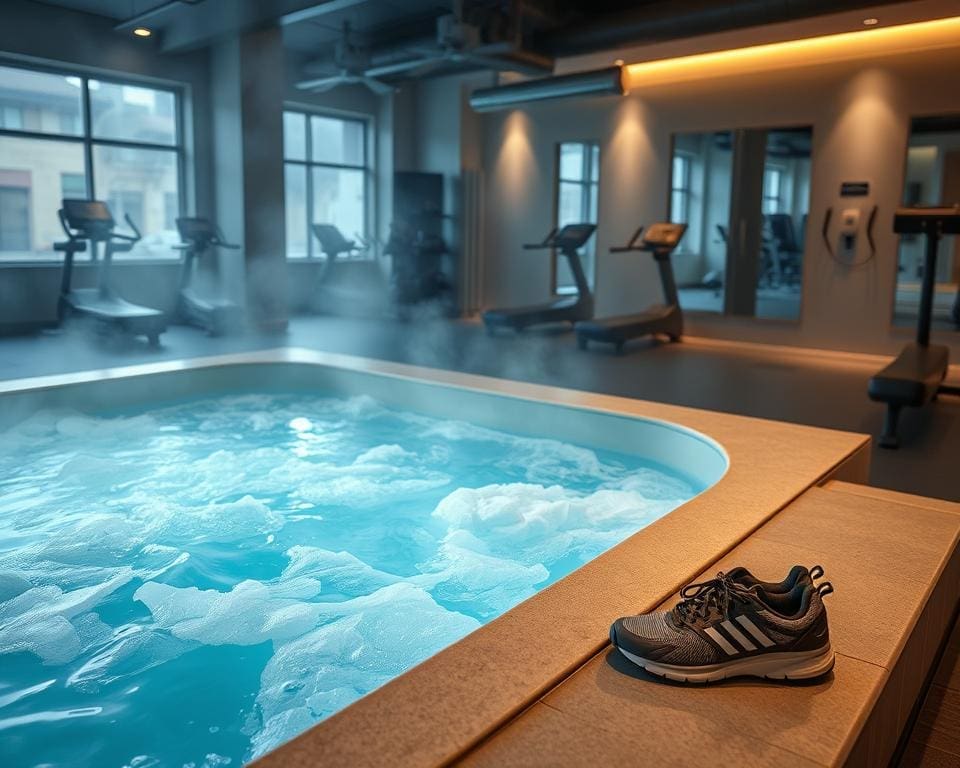In the ever-evolving world of fitness, cold plunge therapy timing has emerged as a powerful tool for athletes and wellness enthusiasts alike. Understanding whether to incorporate a cold plunge before or after your workout can significantly enhance your training regimen, offering remarkable benefits of cold plunge that aid in muscle recovery and performance optimization. As more individuals seek solutions to reduce inflammation and accelerate recovery, the relevance of cold plunges has never been more critical. This article delves into the science behind this invigorating practice, guiding you on the optimal timing for maximum impact.
The Science Behind Cold Plunge Therapy
Understanding the mechanisms behind cold plunge therapy can unveil its transformative effects on the body, particularly for athletes. Cold plunges not only promote recovery but also optimize overall performance. Several studies have illustrated how cold exposure instigates physiological changes that contribute to quicker muscle recovery and enhanced athletic benefits.
Understanding Cold Plunge Mechanisms
When athletes immerse themselves in cold water, their blood vessels constrict, which reduces inflammation and initiates faster recovery times. This response enhances nutrient distribution throughout the body while swiftly flushing out metabolic waste. The cold plunge recovery benefits are marked by significant reductions in muscle soreness, enabling athletes to train harder and recover efficiently. According to research, these physiological adjustments play a crucial role in improving the overall recovery landscape.
How Cold Exposure Affects Muscle Recovery
Cold exposure offers notable advantages for muscle recovery post workout. Immersing sore muscles in cold water can effectively alleviate micro-tears caused during intense training sessions. This minimizes the recovery time ahead of future workouts, benefiting both professional and amateur athletes alike. Athletes frequently report significant decreases in delayed onset muscle soreness (DOMS), enhancing their capacity to push their limits even further.

Cold Plunge Before or After Your Workout
Deciding when to do a cold plunge can significantly influence your fitness journey. Understanding your personal fitness goals plays a critical role in determining the optimal timing for cold plunge therapy. Whether your aim is to enhance performance, prevent injuries, or improve recovery, each objective may require different strategies regarding *cold plunge before or after your workout*.
Assessing Your Fitness Goals
Before delving into *cold plunge therapy timing*, it’s essential to clarify your fitness aspirations. Consider the following factors:
- Injury Prevention: Using a cold plunge pre-workout may prepare muscles for maximum efficiency, potentially staving off injuries.
- Performance Enhancement: Cold exposure can activate the body, making it ideal for a pre-workout boost.
- Recovery Focus: Post-workout cold plunge helps flush out lactic acid and supports muscle recovery.
Timing Your Cold Plunge for Optimal Results
The effectiveness of *cold plunge for exercise recovery* is largely dependent on timing. Both the timing and duration can enhance benefits significantly. Experts recommend utilizing cold plunge therapy within a specific time frame for post-exercise recovery:
- Engage in a cold plunge ideally within 30 minutes to 2 hours post-workout for maximum recovery benefits.
- Adjust the duration based on your training intensity; longer exposures may be helpful after strenuous workouts.
Using cold plunges strategically can greatly enhance your overall workout regimen. Understanding *when to do a cold plunge* can set you on a path toward more effective recovery and performance enhancement.
Benefits of Cold Plunge for Athletic Performance
Cold plunge therapy has emerged as a powerful tool for athletes aiming to enhance their performance. From muscle recovery to improved focus, the cold plunge offers an array of advantages that can significantly impact athletic training. Understanding these cold plunge recovery benefits for athletes reveals how this practice can elevate overall performance and training intensity.
Cold Plunge Recovery Benefits for Athletes
One of the most striking benefits of cold plunge therapy lies in its ability to accelerate recovery. Athletes often encounter muscle soreness that can hinder their training regimen. Regular exposure to cold plunges not only minimizes delayed onset muscle soreness but also reduces inflammation. By promoting circulatory benefits, cold plunge for exercise recovery allows athletes to bounce back quicker and tackle intense workouts without the discomfort of lingering fatigue.
Enhancing Endurance and Speed with Cold Therapy
Cold therapy has shown remarkable results in enhancing endurance and speed among athletes. Research highlights the positive correlation between cold exposure and improved aerobic capacity. Athletes who employ this strategy can sustain higher training intensities for more extended periods. The physiological response to cold therapy, including reduced heart rates during exercise, facilitates better oxygen delivery to the muscles, ultimately translating to enhanced performance.
The fusion of these elements embodies the true potential of cold plunge therapy, setting the stage for athletes to redefine their capabilities.
Best Practices for Incorporating Cold Plunge in Your Routine
To effectively reap the benefits of cold plunge therapy, understanding the best practices for cold plunge is essential. Begin by determining an appropriate water temperature; between 50°F to 59°F is commonly recommended. For those new to cold exposure, gradual acclimatization is vital. Start with shorter immersion times, around 1 to 3 minutes, and work your way up to 10 minutes or more as your body adjusts comfortably.
Frequency is another crucial element when incorporating cold plunge in routine. Most experts suggest using cold plunge therapy 2 to 3 times a week for optimal results. This frequency allows your body to recover without feeling overwhelmed. Additionally, prior to and after your sessions, ensure you stay properly hydrated to enhance recovery and overall performance.
Listening to your body plays a significant role in your cold plunge journey. Monitor how you feel during and after your sessions, and adjust the duration and frequency accordingly. Following guidelines from articles such as “Incorporating Cold Plunge Therapy into Athletic Training” will provide a structured approach. By integrating these strategies into your routine, you’ll not only capitalize on the full range of benefits but also foster a resilient mindset that fuels your fitness goals.
Source: Cold plunge before or after workout: does timing matter?









